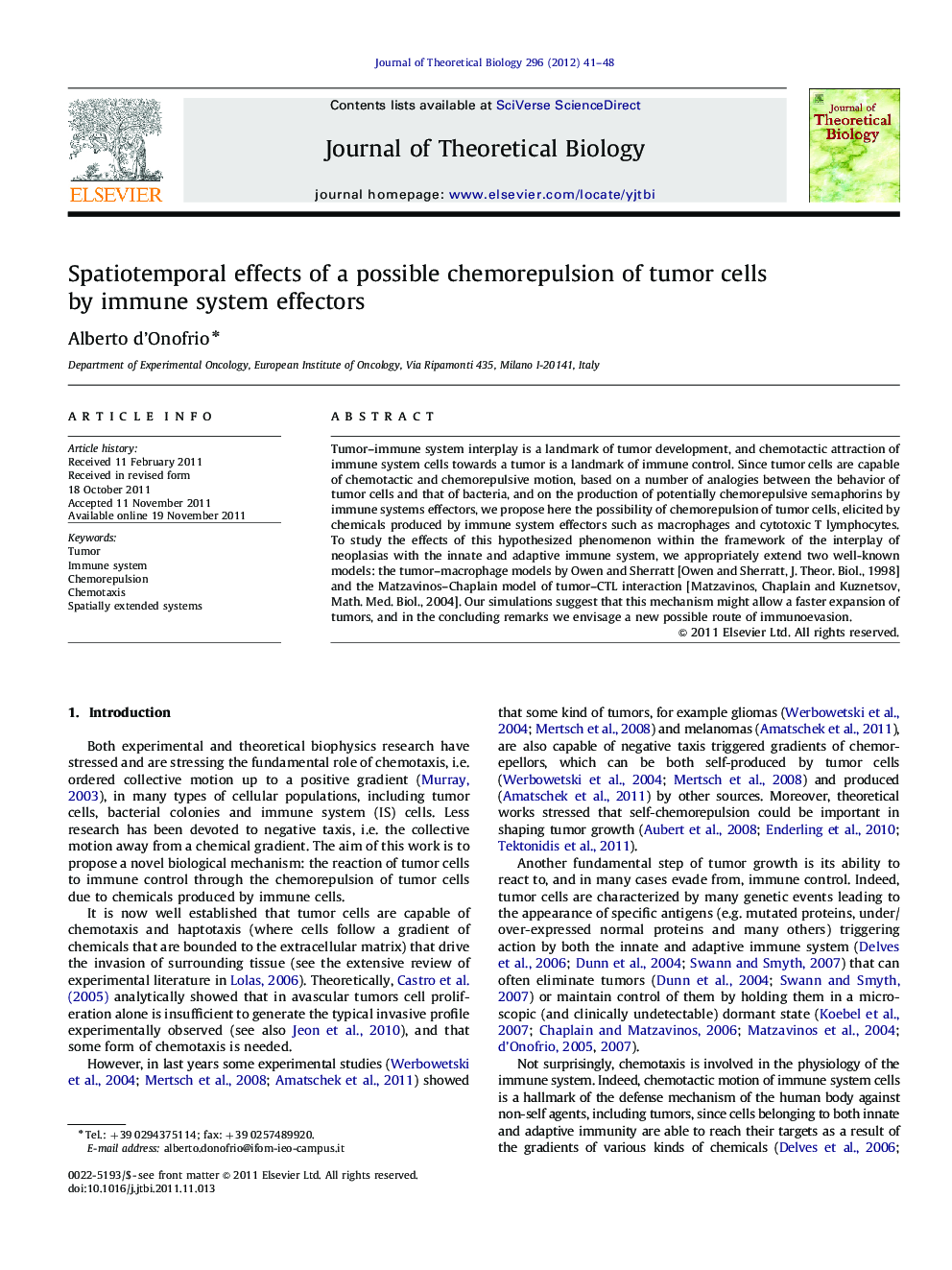| Article ID | Journal | Published Year | Pages | File Type |
|---|---|---|---|---|
| 4496813 | Journal of Theoretical Biology | 2012 | 8 Pages |
Tumor–immune system interplay is a landmark of tumor development, and chemotactic attraction of immune system cells towards a tumor is a landmark of immune control. Since tumor cells are capable of chemotactic and chemorepulsive motion, based on a number of analogies between the behavior of tumor cells and that of bacteria, and on the production of potentially chemorepulsive semaphorins by immune systems effectors, we propose here the possibility of chemorepulsion of tumor cells, elicited by chemicals produced by immune system effectors such as macrophages and cytotoxic T lymphocytes. To study the effects of this hypothesized phenomenon within the framework of the interplay of neoplasias with the innate and adaptive immune system, we appropriately extend two well-known models: the tumor–macrophage models by Owen and Sherratt [Owen and Sherratt, J. Theor. Biol., 1998] and the Matzavinos–Chaplain model of tumor–CTL interaction [Matzavinos, Chaplain and Kuznetsov, Math. Med. Biol., 2004]. Our simulations suggest that this mechanism might allow a faster expansion of tumors, and in the concluding remarks we envisage a new possible route of immunoevasion.
► Chemorepellors for tumor cells (TCs) are produced by immune system effectors (ISEs). ► We model possible chemorepulsion of TCs, due to those chemorepellors. ► Simulations suggest that this mechanism might allow a faster expansion of tumors. ► We envisage a new possible route of immunoevasion.
